Hockey is a challenging, muscular game that features intense play and strong hits. Keeping yourself safe and healthy must come first, no matter what level you play. Hockey players can prevent injuries or have their severity reduced by wearing the proper outfit and using the appropriate protective gear.
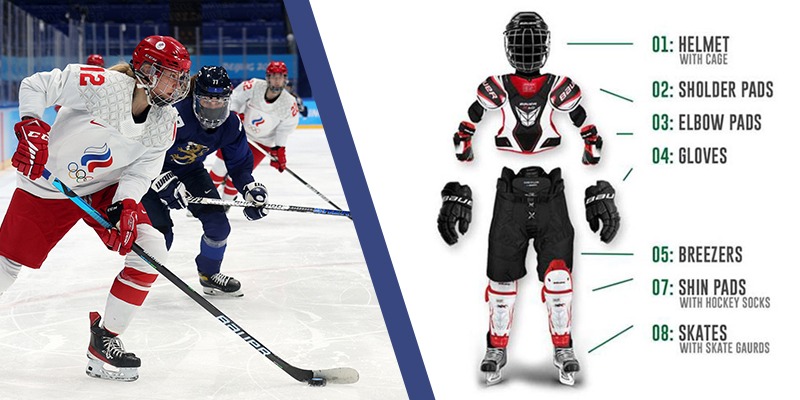
This article discusses the various items hockey players wear and use in the game and the ice hockey equipment cost.
Standard hockey players Gears
Ice Hockey Helmet
The head and face sustain the most injuries in hockey. As such, all hockey players must wear interior foam shell helmets for protection and comfort. These helmets help to reduce the risk of head injuries like cuts and concussions. When players wear helmets, they are protected from getting hit in the head by a puck, the boards, the ice, or another player after a hit or collision.
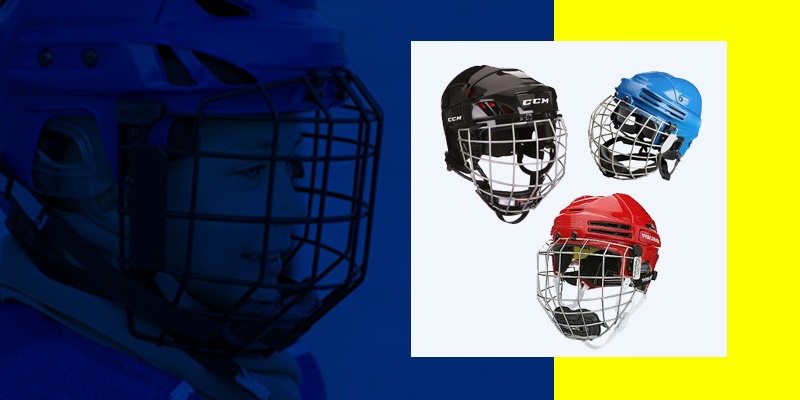
When playing professionally, it’s recommended to only use helmets authorized by the Hockey Equipment Certification Council. Hockey helmets come in various sizes and styles and cost anywhere between $50 and $400.
Neck Guards
Ice hockey neck guards are an underrated piece of equipment. There have been many stories of how a player got hit in the neck with a stick or accidentally slashed by a skate, leading to injuries.
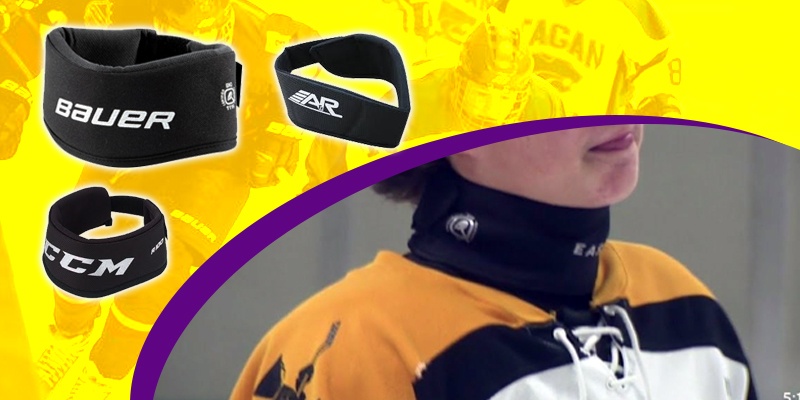
A neck guard for “skaters” typically comprises several ABS plates or nylon for puncture resistance, cushioning for comfort and fit, and an outer layer made of tear-resistant nylon mesh. The neck protector for goalies is often a curved Lexan panel that hangs slightly below the mask on nylon cords, like a metal military gorget.
While it takes you some time to adapt to it, a neck guard makes you safer and is today being required in more youth hockey leagues.
Shoulder Pads
Hockey players wear shoulder pads and chest protection to lower the chance of harm to their shoulders, chest, and collarbone. The pads are available in numerous designs and dimensions.
Elbow pads protect the arms from damage caused by hits, sticks, and pucks by covering the upper arm and a portion of the lower arm. The forearm region between the elbow pad’s end and the glove’s cuff is protected by slash guards.
Typically, defensive players prefer more padding to shield them from high sticks, pucks, and intense physical contact. Players on offense have thinner pads, sacrificing protection for comfort and flexibility. Hockey shoulder pads cost anywhere from $150 to $300.
Elbow Pads
From a safety standpoint, elbow pads are an essential piece of equipment. Whenever a player gets hit by the boards and falls hard to the ice, the elbows pad protects their elbow from the impact of the ice or glass.
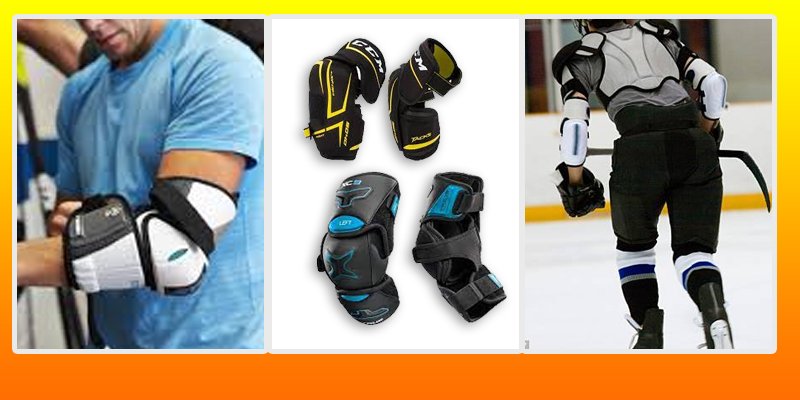
As a beginner, you will fall a few times when learning to skate, and most of the time, your elbows will take the brunt of the blow. The cushions in the elbow pad can prevent fractures and bruise to the elbow joint and arm bones.
Some elbow pads cover the elbow joint and a portion of the upper and lower arms, while some can extend to cover the entire upper arm. Elbow pads cost anywhere between $40 to $150.
Hockey Jerseys
Ice hockey jerseys are worn over players’ shoulder pads, elbow pads, and chest protectors. Jerseys are color-coded and numbered for team and player identification. They often have the team’s name on the front, with the individual player’s name and their number on the back.
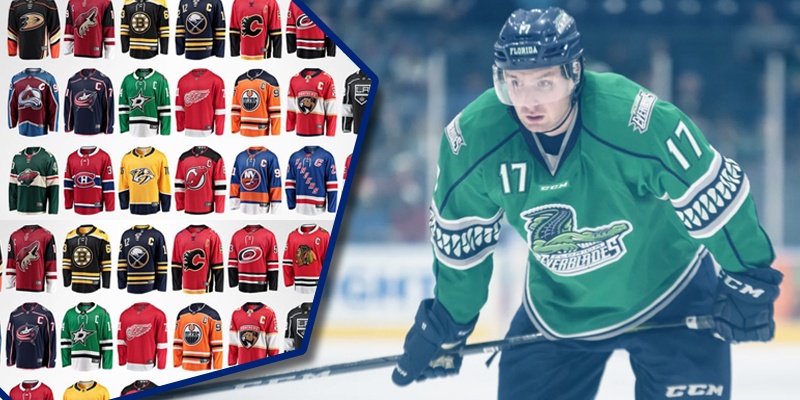
Traditional hockey jerseys are made of textiles with a little stretch and are large and roughly square in shape. Most professional leagues mandate the use of a “fight strap,” which fastens the jersey to the inside of the pants to prevent a player’s jersey from being pulled over the opponent’s head during a fight. Hockey jerseys can cost from $15 to $300, depending on the quality and style.
Hockey Gloves
Ice hockey players wear gloves to strengthen their grip on their sticks. Asides strengthening your grip, gloves give extra protection against hand injuries from falling, being struck by the puck, or having your hands slashed by another player’s stick.
Ice hockey gloves are similar to hands-worn winter gloves. However, players wear these gloves so they may maintain firm control and an excellent grip while holding their sticks.
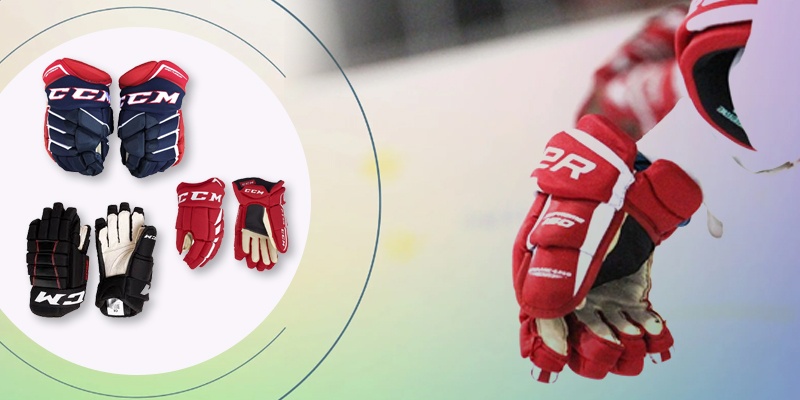
The gloves are made of very thin leather on the palm and fingers, with significantly more padding on the exterior that offers protection if a player is slashed during play. The thumbs are also reinforced to prevent them from bending backward.
Ice hockey gloves cost between $50 and $200.
Hockey Pants
Hockey pants are a vital part of the ice hockey attire that helps shield the player’s thighs, hips, and buttocks. They’re typically padded with cushioning in the hip, thigh regions, and tailbone. The waist usually has a plastic shield integrated into it for added kidney and sternum protection.
Hockey pants are made of excess layers of padding and cushion to ensure a player doesn’t get hurt from a fall, hit, or puck.
The pants protect the player from the knees up to the lower back. A good fitting pair is essential because if you get a too-big pair, they will always be sagging and hanging from your hips, and if you get a smaller pair, you will have some vulnerable, exposed areas that are not fun to get hit in.
Hockey pants also have straps and laces that can be tightened to hold them. They cost between $50 to $200.
Jockstrap (Ladies’ Pelvic Protector)
The jock is a protective cap that is made to shield the genitalia. Ice Hockey is a contact sport, so both men and women players wear jockstraps to protect the vulva testicles and penis during the game.
Male jockstraps consist of an elastic waistband with a support cushion for the genitalia attached to the base and two elastic straps fastened to the right and left sides of the waistband at the hip. In some variations, the pouch may have a pocket for an abdominal guard (impact-resistant cup or box) to keep the testicles and penis safe from harm.
Garter
Hockey players frequently use garter belts to keep their socks up. A garter is a waistband made of elastic with many straps that descend to the front and back of the legs. Each strap has a clip or hooks at the end that connects to the sock. Most recent garters belts have Velcro straps, making it simpler to fasten the stockings.
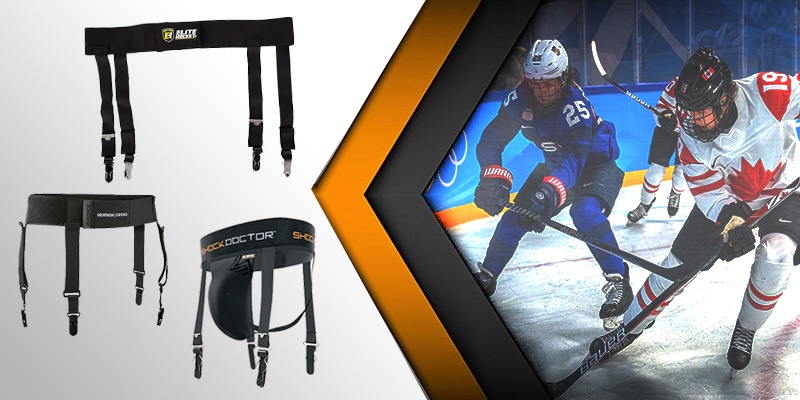
But garters are rarely used today, as many jock shorts and hockey pants come with built-in straps in the shape of velcro patches on the front and back of the leg that grab and hold the sock.
Shin guards
Shin guards for ice hockey protect the player’s knees and leg from harm and provides players with a sense of security and safety when blocking shots, taking hits, or falling to the ice, thanks to their cushioning and protective plastic shell. Shin guards protect the frontal bones of the leg and the knee joint from collisions of sticks, pucks, and skates.
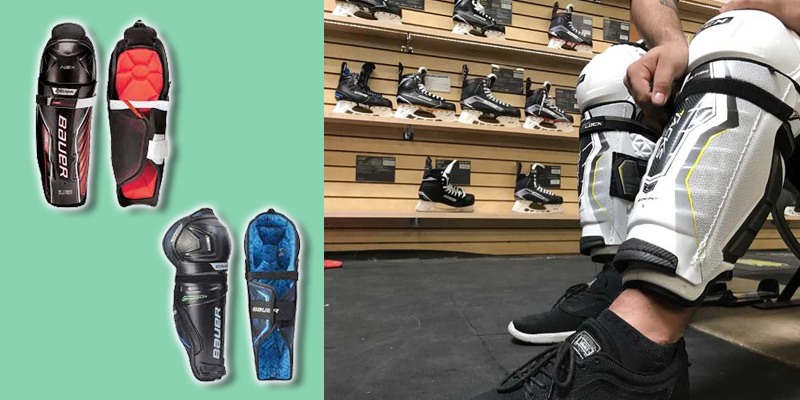
They are secured to the leg with velcro straps and, occasionally, transparent tape to prevent it from shifting off as players move around.
Buying the right shin pad size is essential to prevent issues when playing. Most sporting goods retailers include a shin guard sizing chart that you can use to determine the proper fit, costing between $60 and $200.
Hockey Socks
Hockey players are required to wear socks covering the leg from the foot to just above the knee. The conventional hockey sock is knitted wool or synthetic tube stocking without a foot. They are frequently velcroed to the jockstrap or covered in clear tape to ensure they stay up and do not tumble down.
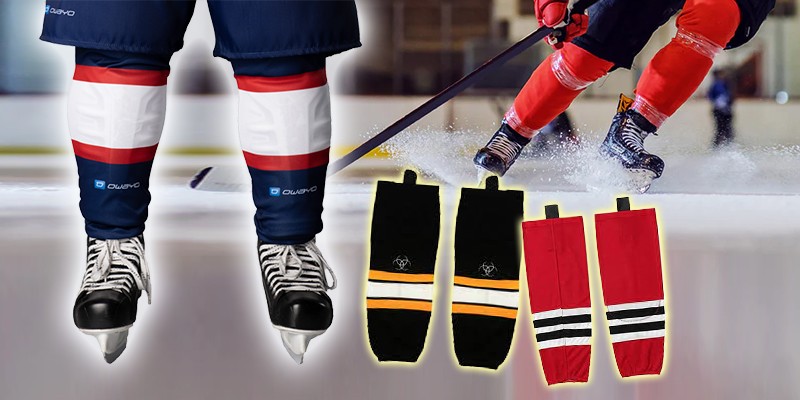
Each team’s home and away socks are unique and must cover the shin guard and be worn with the jersey under USA Hockey regulations. A pair of hockey socks cost about $20.
Mouthguards
Mouthguards are crucial for high-impact sports like hockey, and almost every dental specialist recommends wearing one. The primary purpose of mouthguards is to prevent teeth from being broken, chipped, or knocked out due to direct facial blows, which frequently happen in ice hockey. By keeping the teeth healthy, you can avoid having your lips or cheeks cut by teeth that are damaged or chipped. A mouthguard provides a player with something to bite into as it is frequently intuitive to bite down before contact.
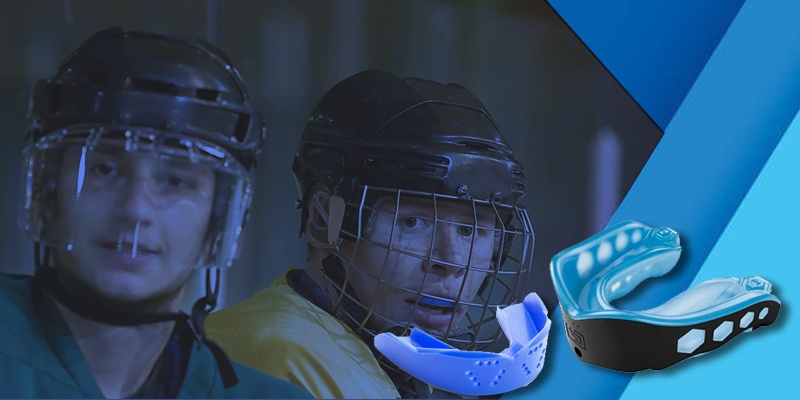
Any severe chin strike can cause a force to transfer from the chin to the jaw bone, into the teeth, and the facial bones. Mouthguards serve as a shock absorber, reducing the force of the blow and preventing injuries like jaw fractures.
Hockey Skates
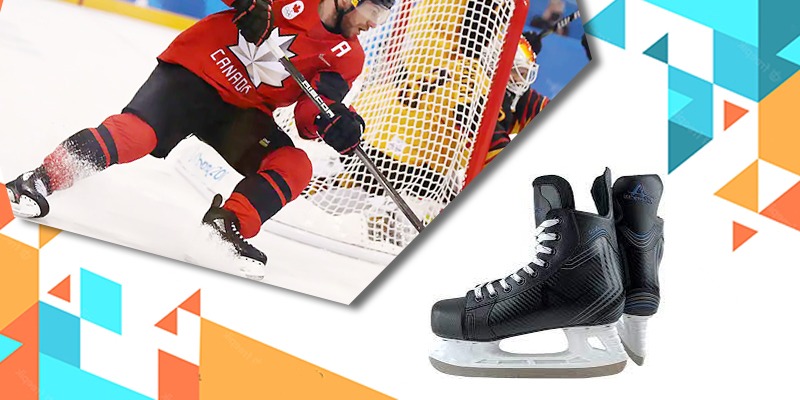
Ice hockey is a full-contact sport where agility, speed, and quickness of movement are essential. It is a sport that moves quickly, with the puck frequently traveling at speeds of over 100 mph. So the athletes must put on the appropriate gear to keep up with the game’s tempo. Hokey skates allow players to move quickly and safely on the rink. They feature a hard shell molded to the player’s foot using memory foam and/or heat-moldable components.
Hockey Stick
A hockey stick is an ice hockey equipment all hockey players use to push, hit, strike, pull, flick, steer, launch, or stop the puck or ball. The goal is to move the puck or ball around the playing area using the stick and try to score.
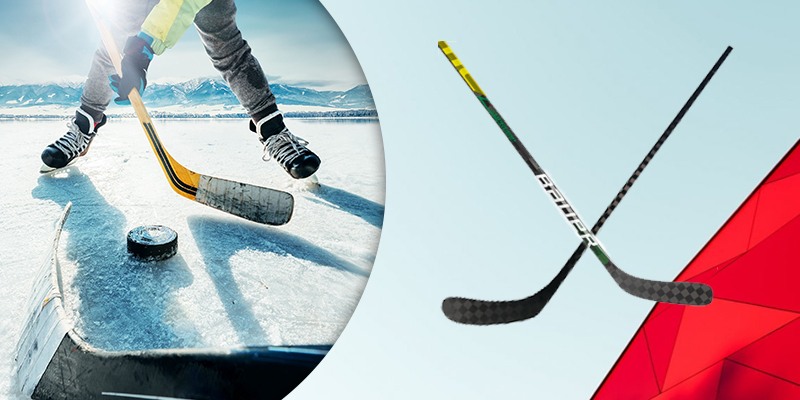
The hockey stick features a lengthy shaft that joins to the bottom-curving blade. The blade of the stick is not quite perpendicular to the shaft, giving it a shape that is somewhat reminiscent of the letter “L.”
Most hockey sticks used now are made of one piece, although some older models included two pieces so players could mix and match the shafts and blades.
Goal Keeper Equipment
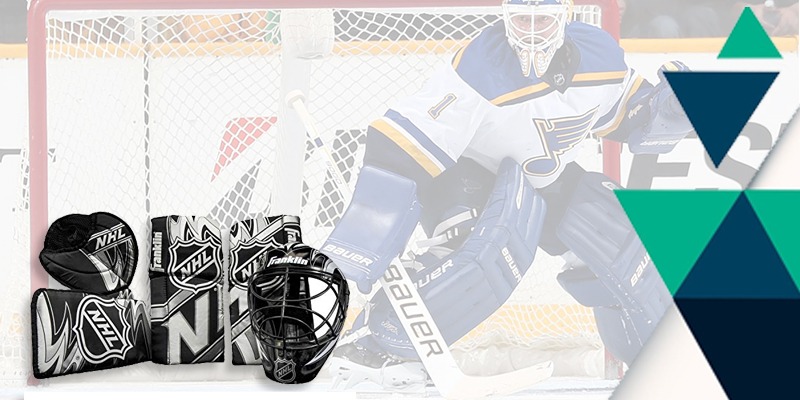
Hockey Goalies wear attires slightly different from regular players to improve their chances of stopping pucks and for additional protection. Most leagues require almost all of the following gear for a goalkeeper:
Goal Keeper Stick
Goalies use a special kind of hockey stick with a larger shape than standard hockey sticks. The goalie stick has a narrow handle and a larger base portion known as the paddle. The stick allows goalkeepers to stop pucks from entering their net.
Goalie sticks differ from other ice hockey sticks in grip, design, and weight. In actuality, a typical hockey stick weighs about 15.7 ounces, compared to the average goalie stick’s 25.15 ounces. Its blade and bottom half are much wider than a player’s.
Goalie sticks are priced differently than player sticks due to the sizes, manufacturers, and different brands. High-end Goalie sticks cost close to $300, while entry-level sticks cost around $50.
It’s, however, essential to find the ideal goalie stick size for the best protection.
Goalie Ice Skates
The ice hockey goalkeeper uses the goalie skates to glide across the rink. The blades of a Goalie skate are thicker and longer than hockey skate blades, providing the player with more surface area to move from side to side swiftly and increased stability to withstand the force of flying pucks.
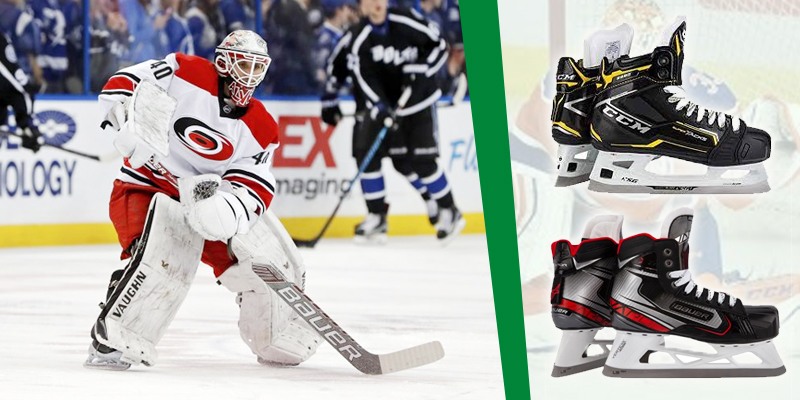
The blades of hockey skates need to be sharpened periodically to maintain a strong bite for fast movements and to remove scratches from collisions with the goal posts. Goalie skates also offer more and better protection than regular skates. Most modern goalkeeper skates come equipped with protection built right into the boot, like a thicker toe cap.
Goalie Blockers
The goalkeeper blocker for ice hockey is a glove-mounted pad with a rectangular form. The blocker provides the goaltender with a sizable area to stop shots while allowing them to maintain control of their stick.
Blockers are traditionally worn on the goalie’s dominant hand, while the catching glove is worn on their non-dominant hand to wield their stick more easily. Blockers can be used to precisely guide a rebound in a specific direction, removing the threat from the area and blocking pucks from getting into the net. It also offers a great deal of protection to the goalie’s arm.
The cost of blockers varies between $80 and $200.
Goalie Catch Glove
A catch glove, also known as a trapper, is used to catch a flying shot or pick up the puck on the ice. It’s worn in the goalie’s non-dominant hand and used to stop any pucks that are headed for the net. A goalie can “catch and release” by grabbing the puck, dropping it behind the net either onto their own stick to play it and then releasing it to stop play and force a faceoff.
Originally shaped like a baseball glove, the trapper has changed into a highly specialized piece of gear made just for collecting the puck. The trapper’s pocket now has a “string mesh” in it, and there is significantly more palm and wrist protection thanks to changes made over time.
Goalie Helmet
As with player helmets, the primary function of a goalie’s helmet is to protect the goalie’s head and, if necessary, deflect pucks away from it. The Goalie helmet has an affixed shield for the athlete’s face and covers the head’s sides, top, and rear. Goalie helmets should be snugly fitted to the head and include an adjustable chin strap to guarantee that the helmet remains on during crashes.
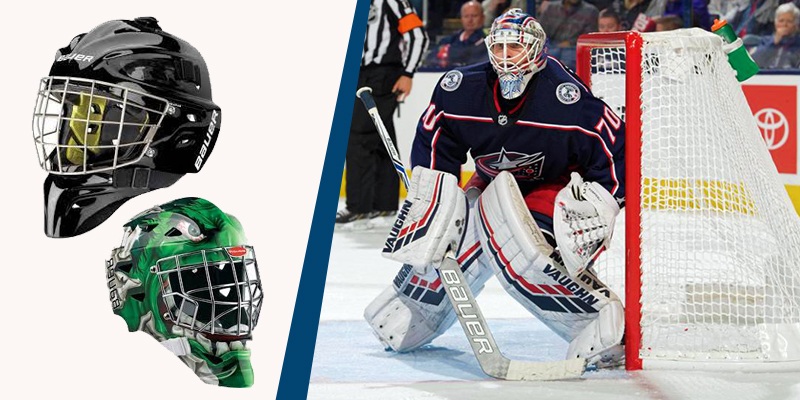
Since concussions are frequent in hockey, most helmets are designed to prevent them. Modern hockey helmets use technology that distributes impact throughout the whole helmet. This significantly minimizes the likelihood of suffering a major injury and lessens total head or brain damage.
Goalie Masks
Goalie masks are distinct from conventional hockey face shields and helmets. Ice hockey goalie masks have only one primary function: to shield the goalie’s face from harm.
It is quite challenging for a goalie to shift their head out of the path of flying objects, especially given that extremely hard hockey pucks can be shot at speeds up to 100 mph. These masks are designed to deflect blows and shield the goalie’s head from harm.
Goalie masks are often made with a cage over the face that allows the goalie to see through a hard piece of plastic or fiber surrounding the head and neck.
Goalie Pants
Goalie pants for ice hockey are fairly similar to player pants. Wearing pants over the jock prevents injuries to a goalie’s lower back and thighs.
Garter belts can be used to keep the pants up, but they are often unnecessary. The price of goalie pants ranges between $100 to $200.
Goalie Chest Guards
The chest guard is another critical piece of goalie equipment. The goalie must make the save when a puck is flying towards their chest at full speed, but more importantly, they must avoid breaking ribs or injuring any portion of their chest in the process, and the chest protector helps ensure that.
Goalie Neck Guards
The goalie’s neck guard is bigger than the standard player’s neck guard. It also has more cushions and superior padding. The neck guard is worn around the neck and protects the throat and collarbone.
It protects the goalie from rising pucks or sticks that may strike or obstruct them during the game.
Other Ice Hockey Equipment
Hockey Bag
Hockey players use hockey bags to transport and keep their gear. These bags come in various sizes and are made by numerous brands. A younger player may wish to choose a hockey bag with wheels as the bag can become very heavy.
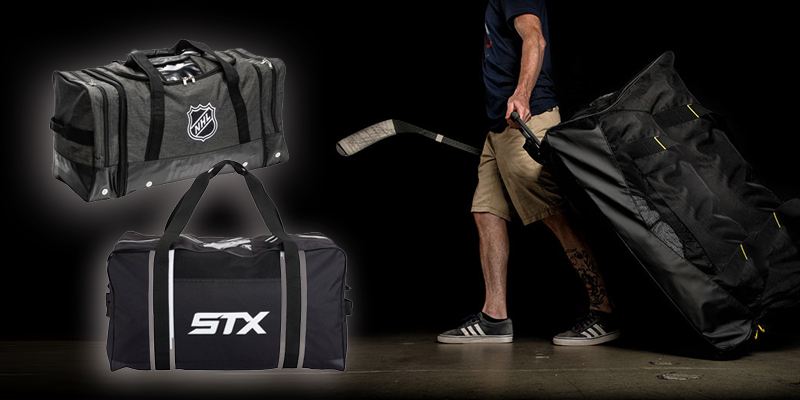
On the other hand, older players might want to use a bag with handles and an over-the-shoulder strap. If you’re a goalkeeper, you might want a larger bag since your gear needs more room.
A hockey bag from a well-known manufacturers like Bauer and Warrior cost between $50 and $150.
Shin Tape
Ice hockey shin tape, also known as clear tape, can be applied directly to the shin guard or over the hockey sock covering the pad to prevent the shin pad from moving during a game.
Stick Tape
Many players favor taping the grip as their hands are always there. Stick tape comes in a variety of designs and colors for the blade. However, most players use black or white to blend in with the puck and the ice. Stick tape costs $2 to $4 per roll, the same as shin tape.
Water Containers
Ice hockey water containers are similar to those used by football or soccer players. A player can squirt water into their mouths from a few inches, while a team can carry a case of 6–12 bottles to the bench.
